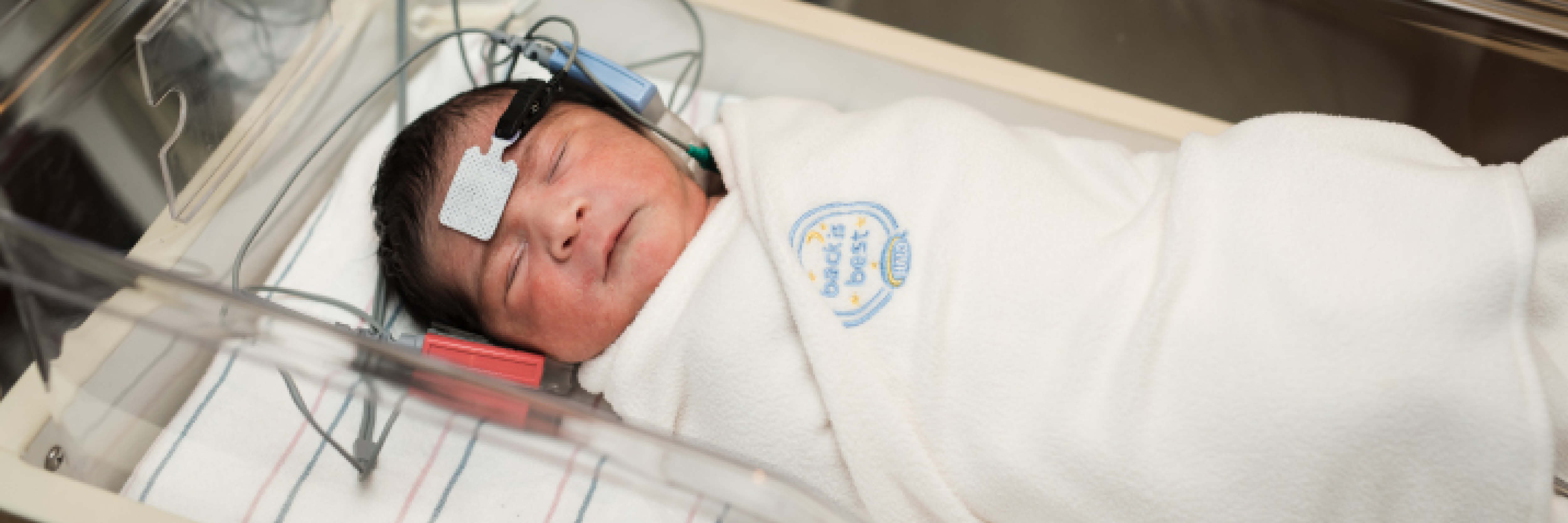Early Hearing Detection and Intervention (EHDI)
Related Programs
Contact Info
Early Hearing Detection and Intervention
Inpatient Screening: At Birth

Role of Inpatient Screening Staff
Important Steps to Cover:
- Educate parents about newborn hearing screening.
- Prepare quiet infant and screen both ears.
- Rescreen before discharge if initial result is a REFER (REFER = Not Passing Result).
- Report final inpatient results to the parent, primary care provider, and MDH Newborn Screening Program through secure MNScreen reporting platform.
- Schedule follow-up appointment prior to discharge for infants who do not pass.
- Have a plan for missed screens, transfers (in and out), and equipment breakdown.
Featured
Training Curriculum
Newborn Hearing Screening Training Curriculum | NCHAM (infanthearing.org)
- Certificate/CEU/CE and non-CEU versions available
- See Module 3 for Otoacoustic Emissions (OAE)
- See Module 4 for Automated Auditory Brainstem Response (A-ABR)
- Direct link to non-CEU video: Newborn Hearing Screening Training
Inpatient screening provider resources
The Sample Policy and Procedure documents listed below were created as a guide for your own internal policy and procedure regarding newborn hearing screening. If you would like to have an editable Word version, you can email us your request at ehdi@state.mn.us
- Sample Competency Checklist for Screeners Performing Newborn Hearing Screening (PDF)
- Sample Newborn Hearing Screening Policy and Procedure for the Newborn Nursery (PDF)
- Hearing screening equipment tips
- Risk Factors for Early Childhood Hearing Loss: Guidelines for Infants who Pass Newborn Hearing Screening (PDF)
- Hearing Screening Result and Follow-up Process for the Well-Baby Nursery (PDF)
- Hearing Screening Result and Follow-up Process for NICU Graduates (PDF)
After verifying the PCP/Medical Home with the family, inpatient screening staff should communicate refer/did not pass results to the PCP/Medical Home. Regardless of the result, staff should also provide families with clear communication about next steps. The documents below are tools that screening staff can use to communicate results with families.
Educational resources for families are available to order in multiple languages on the MDH Newborn Screening Store.
Below are some common misconceptions about hearing loss and newborn hearing screening that clinicians might encounter. For additional information, please see Myths vs. Clinical Facts of Newborn Hearing Screening and Early Diagnosis (PDF).
Misconception: Abnormal OAE's along with flat tympanograms (normal volume) confirms a conductive hearing loss.
Clinical Fact: Diagnostic ABR including bone conduction testing is needed in combination with OAE's and tympanograms for a complete diagnosis of type and degree of hearing loss in each ear, and to rule out underlying sensorineural hearing loss.
Misconception: Hearing screening is not needed if there is no family history of hearing loss.
Clinical Fact: More than 90% of infants who are deaf and hard of hearing have two hearing parents.
Misconception: Babies need to be sedated to complete ABR testing.
Clinical Fact: Babies younger than 3 months can typically be tested without need for sedation.